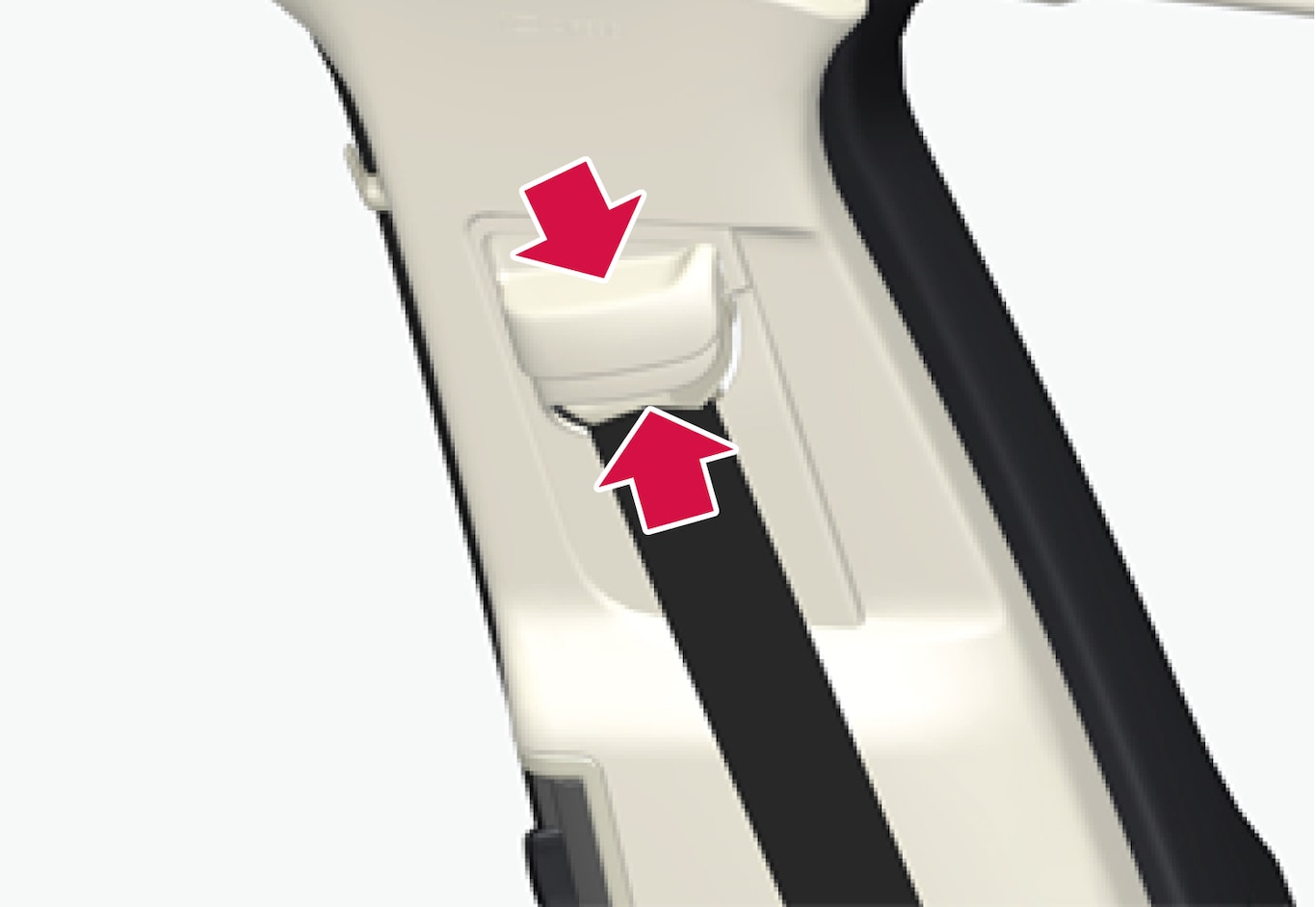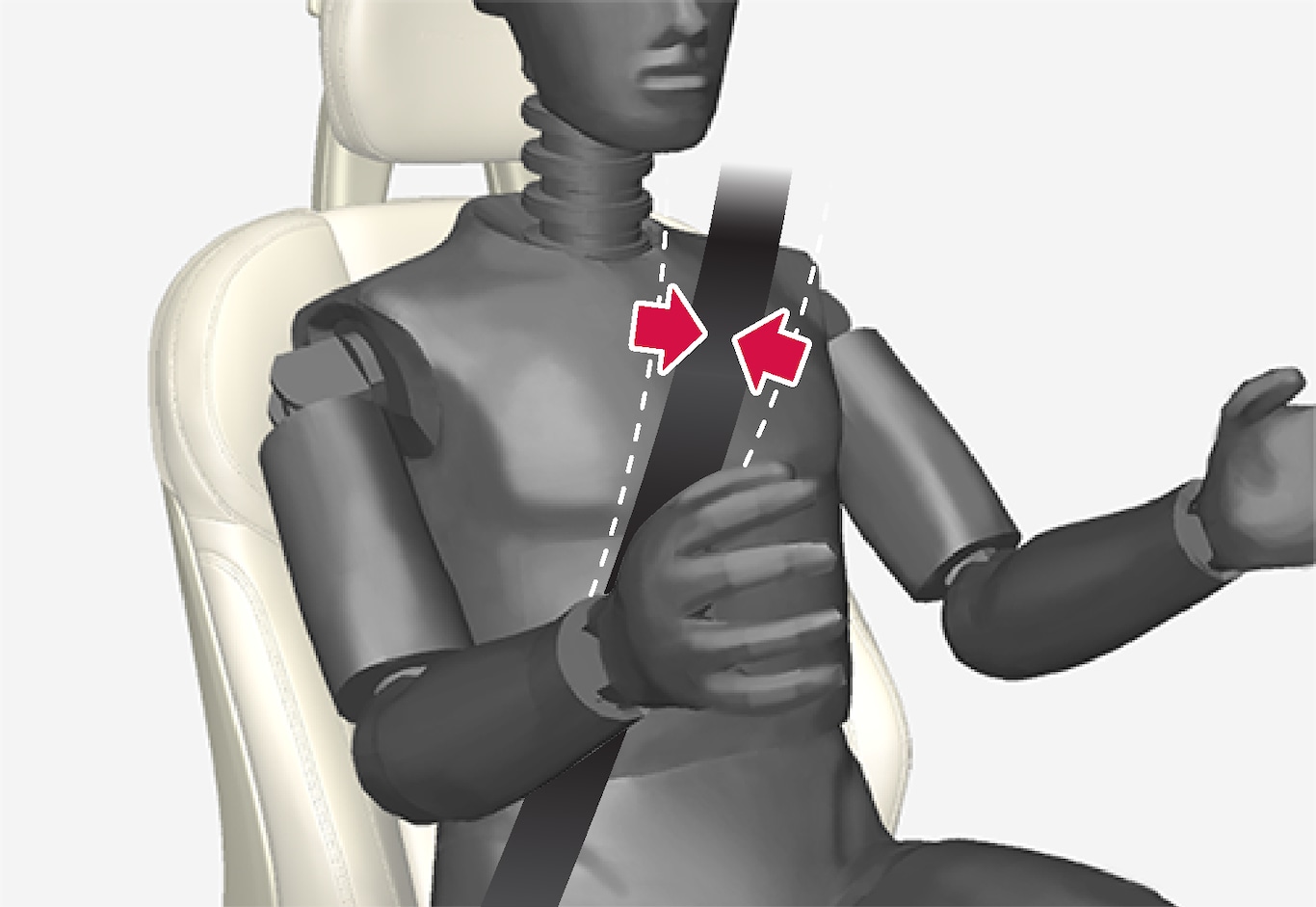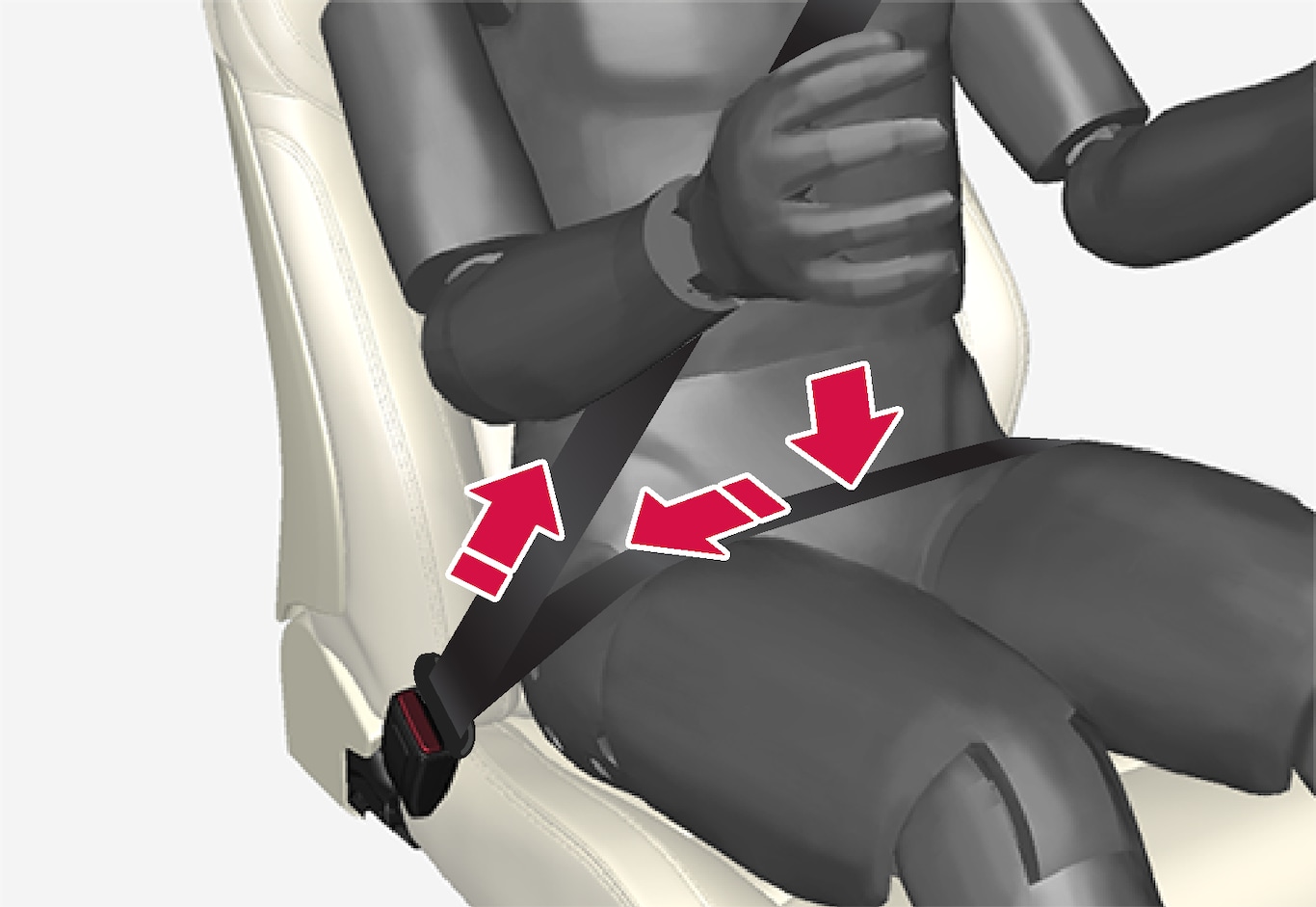Buckling seat belts
Pull out the belt slowly and make sure it is not twisted or damaged.
Note
The seat belt is equipped with a seat belt retractor that will lock up in the following situations:
- if the belt is pulled out too quickly.
- during braking and acceleration.
- if the vehicle is leaning excessively.
- when driving in turns.
- if the automatic locking retractor/emergency locking retractor (ALR/ELR) is activated. Each seat belt (except for the driver's) is equipped with an ALR function, which is designed to keep the seat belt taut when installing a child restraint. ALR is activated when the seat belt is pulled out as far as possible. If this is done, a sound from the seat belt retractor will be audible, which is normal. The seat belt can now only be fed into the retractor, not pulled out. This function is automatically disabled when the seat belt is unbuckled and fully retracted.
Buckle the seat belt by pushing the latch plate into the receptacle.
A distinct "click" indicates that the belt is locked into place.
Warning
Always insert the seat belt latch plate into the belt buckle on the correct side. Failure to do so could cause the seat belts and belt buckles to malfunction in a collision. There is a risk of serious injury.
The height of the seat belts in the front seats can be adjusted.

Press the button on the seat belt holder and move the belt up or down.
Position the belt as high as possible without it chafing against the neck.

Tighten the lap section of the seat belt over the hips by pulling the diagonal section upward toward the shoulder.

Warning
Never use a seat belt for more than one occupant. Never wear the shoulder portion of the belt under the arm, behind the back or otherwise out of position. Such use could cause injury in the event of an accident. As seat belts lose much of their strength when exposed to violent stretching, they should be replaced after any collision, even if they appear to be undamaged.
Warning
Do not use clips or fasten the belts around hooks or other parts of the interior. This will prevent the seat belt from fitting properly.
Warning
Never damage the seat belts and never insert any foreign objects into the belt buckle. This may cause the seat belts and belt buckles to malfunction in a collision. There is a risk of serious injury.
Unbuckling seat belts
Press the red button on the seat belt receptacle and make sure the seat belt retracts fully into the retractor slot.
If it does not fully retract, guide the belt manually into the slot and make sure it does not hang loose.